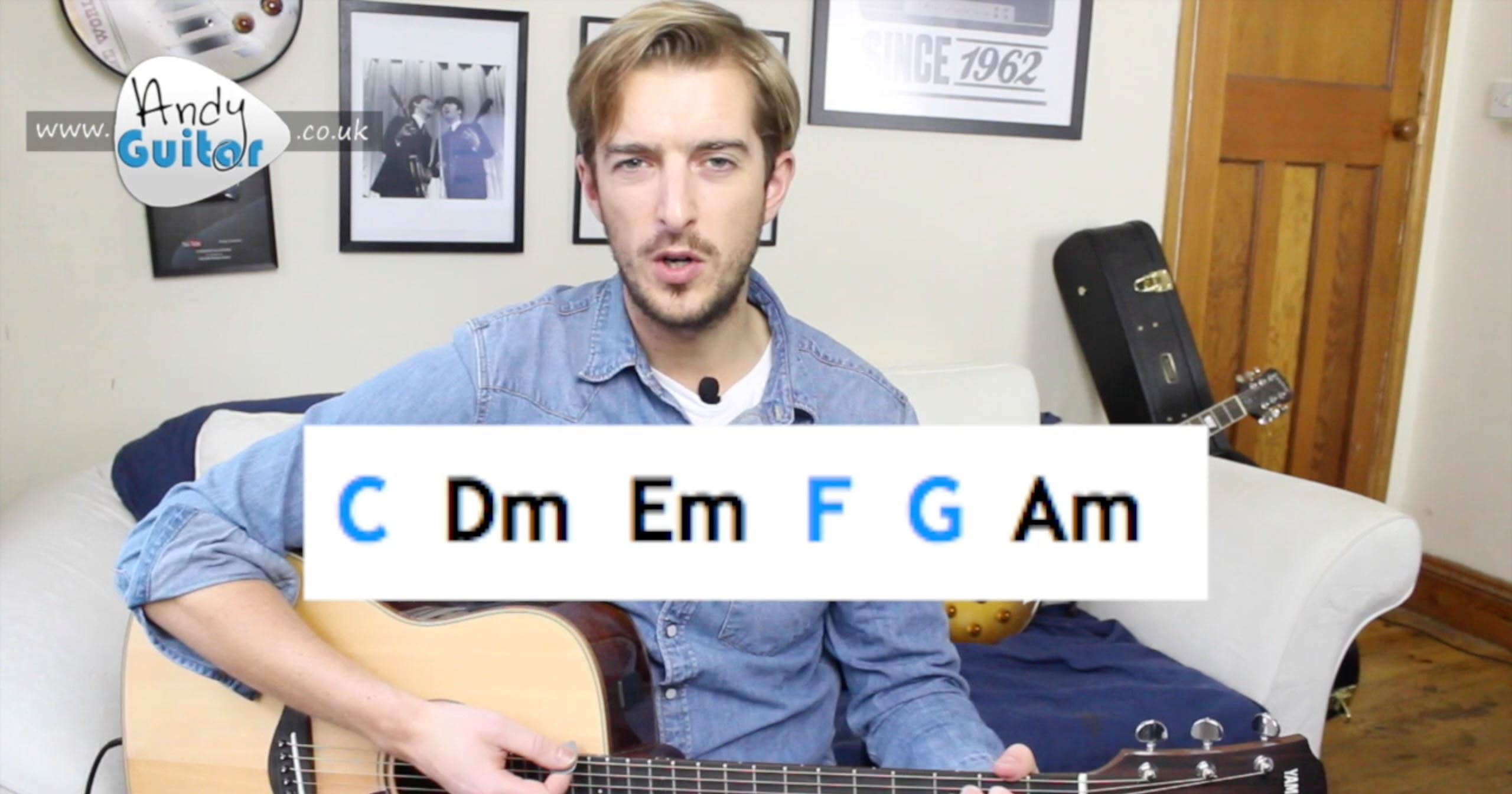In this video
Pop songs are always in a ‘key’. This means they use certain chords that go together well, which are derived from corresponding the major scale. Music teachers always explain the key of C first as it has no nasty 'sharps' or 'flats'.

These chords can be seen like colours that go together well - meaning any of these are a safe choice, and a song in the key of C would mainly use these chords and few others, if any. As well as the chords, we can play notes from the C major scale (next page) over the top of these for the melody.

Example chord sequences in the ‘Key of C’
#1 - Begins on C and resolves on the tonic (aka sounds finished)
This resolve can be heard because we are starting and finishing on the key aka the tonic chord.
|C |Am |F |C |
#2 - Begins on C but is left unresolved on the G (aka sounds unfinished)
This unresolved sound is a great example of tension in music. Tension and release is an underlying principal to why sounds sound great and others just don't.
|C |Am |D |G |
N.B. The info on cadences that I talk about in the video above differs somewhat to their dictionary definitions. This was chosen to communicate the heading of the key of a song to beginners, while being helpful at understanding keys. More to come on cadences in the future!
For further reading on this topic, you can learn about the key of G in my Intermediate Course here



